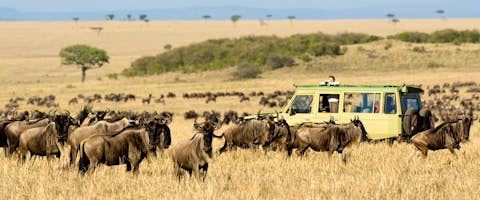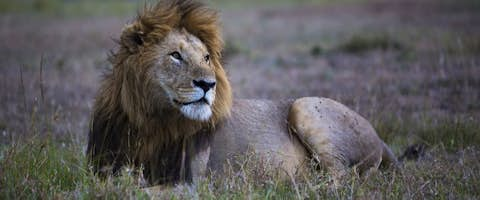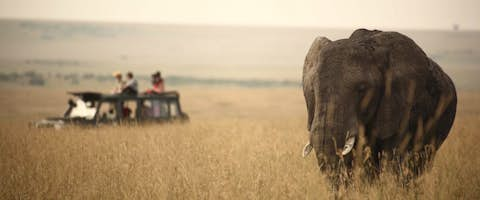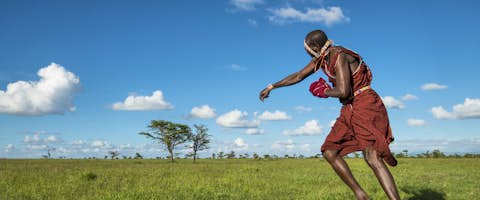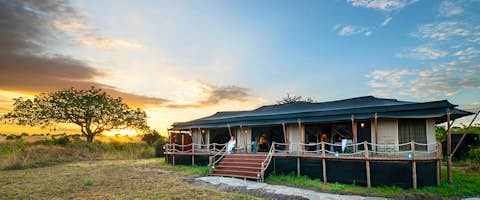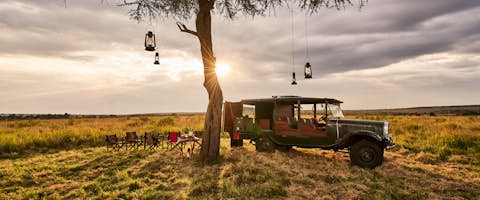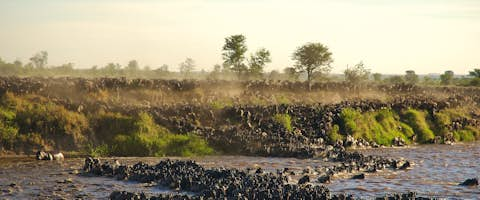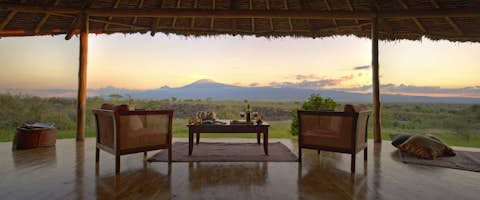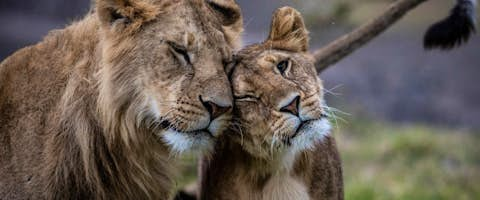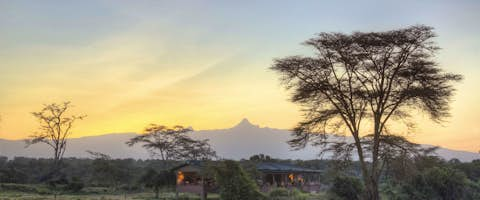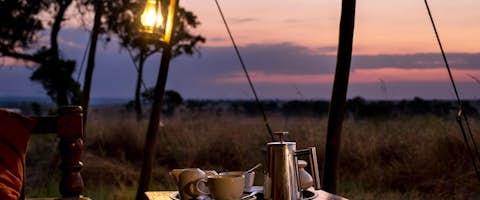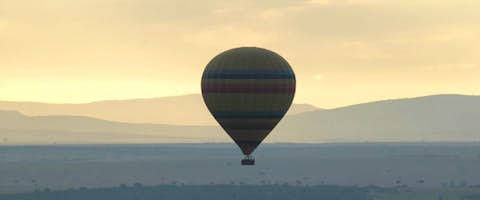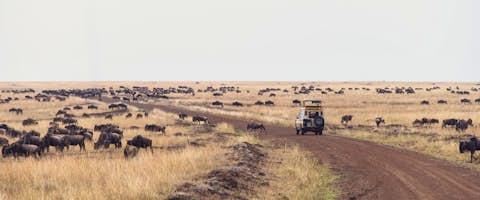Reasons to visit the Masai Mara
The Masai Mara is the most popular safari destination in East Africa, along with the Serengeti in northern Tanzania.
It is the site of the Great Migration, where over 2 million zebras, gazelles and wildebeest travel from Serengeti to the Masai Mara each year.
Often called the Jewel of Africa, the Masai Mara takes its name from the Masai tribe who have inhabited these lands since the 17th century.
Mara translates to spotted, referencing the scattered acacia trees that mark the landscapes, and that have become the symbol of the Masai Mara.
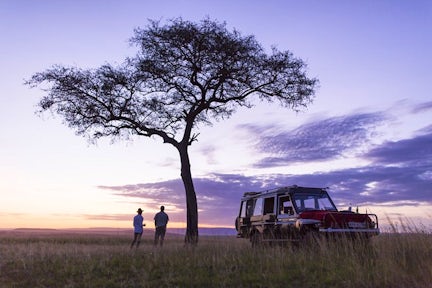
Safaris in the Masai Mara
The Masai is one of Africa's best safari destinations. The reserve has excellent wildlife densities and there are a number of ways to explore.
Game drives and walking safaris take you up close to the animals. You can also take to the skies via hot air balloon for incredible aerial views of the savannah and wildlife. Horseback safaris are also possible here.
Most safaris are centred on the Central Plains, the largest part of the reserve full of dense bushes, grasslands and a huge variety of wildlife. If you head east, you'll arrive at the Ngama Hills, a series of undulating hills that extend to the reserves limits.
Slightly more centrally sits the leafy bushes beloved by the black rhino, and further west lies the Oloololo Escarpment, part of the Mara Triangle which borders the legendary Mara River with vibrant-lime coloured grass and woodlands.
Most people spend a few nights exploring the Mara, and you can choose between basic camps, mid-range accommodation, or luxury tented camps and lodges as your base.
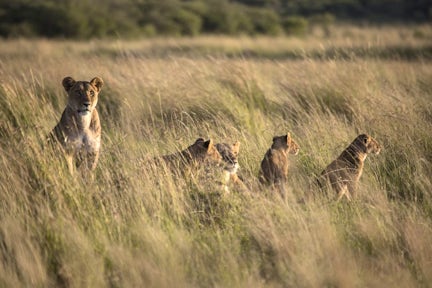
A watchful mother, Maasai Mara
Private Wildlife Conservancies
Located in Kenya's South West, the Masai Mara National Reserve covers just over 583 square miles. Unlike national parks, the Masai Mara has no fencing and is instead bounded by the Ololoolo (Siria) Escarpment on its western edge and extends south to the Tanzania border, where it seamlessly merges with the Serengeti National Park.
However, the reserve's northern and eastern borders are surrounded by private wildlife conservancies.The conservancies add 350,000 acres to the greater Mara area, and animals are free to roam anywhere within the Mara ecosystem.
There are fourteen in total, but the top four conservancies, also known as the 'Big Four' are: Mara North, Mara Naboisho, Ol Kinyei, and Olare Motorogi.
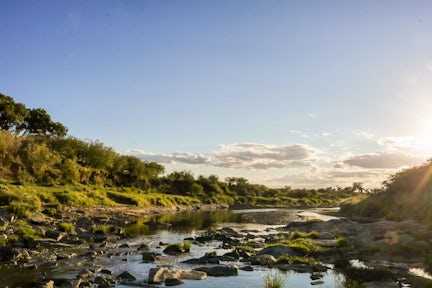
The Great Migration
The Great Migration is the world's largest migration of wildlife.
The event takes place from July to October each year. Over 2 million mammals make their way from the Serengeti in northern Tanzania where the dry grasslands can no longer sustain them.
It's a treacherous journey, particularly at the crossing of the Mara River. Crocs lurk in the murky waters, and when wildebeest numbers are this large, not everybody will make it across alive.
Popular Safaris including the Masai Mara
The tours below showcase just some of what is possible. Use these itineraries as starting points, or to draw inspiration. Then get in touch, and let our expert team help craft the perfect itinerary for you.

Brilliant says
The Mara conservancies are the best option for those wanting a secluded safari experience, as guest numbers are strictly limited on a number of acres per-guest basis.
Conservancies also offer a more flexible approach to the safari experience, with walking safaris, horseback riding, off-roading and night game drives available (all of which are not allowed in the reserve). This enables closer wildlife encounters and a wider variety of experiences.
When to visit the Masai Mara
The Masai Mara can be visited year-round, but there are a few factors to keep in mind to get the most out of your experience depending on your interests, budget, and priorities.
From a wildlife perspective, the Masai Mara will not disappoint, regardless of when you visit. The density of resident wildlife in the main reserve (and its surrounding conservancies) remains consistent throughout the year, meaning there is always plenty to see.
The two main considerations are:
- Weather patterns - the Mara experiences two dry seasons, one short rainy season and one long rainy season.
- The Great Migration - a seasonal event that brings over 1.5 million wildebeest, zebras, and gazelles from the Serengeti into the Mara.
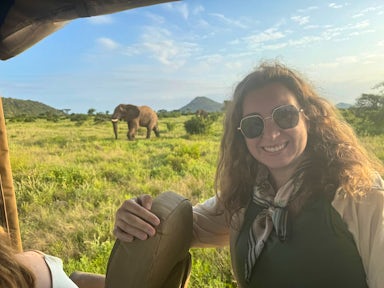
Day two on safari in the Masai Mara
Masai Mara Seasonality
Jan-March
An excellent time to visit the Mara. The short rains have ended, leaving the plains lush and green. Many animals have their young during this period - you'll see baby gazelles, zebras, and even lion cubs. The resident big cats are highly active and wildlife is abundant. This is an excellent time to visit for predator sightings and skies tend to be clear.
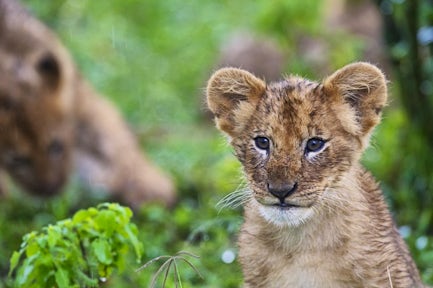
Lion Cub at Maasai Mara National Reserve.
April - May
This is the green season and the wettest period in the Mara. The rains transform the plains into a landscape of lush greens and dramatic skies. Wildlife remains plentiful as the resident animals do not migrate. Many guides actually prefer this time of year because there are far fewer vehicles around and you feel like you have the place to yourselves. The scenery is stunning and you’ll have great light, brilliant photographic conditions, dramatic skies…wonderful! Some camps and lodges close during the wet season and the longer grasses can make the wildlife a little trickier to spot. Sometimes roads can become blocked so the conservancies are a great option around this time as the vehicles can go off-road. Prices are significantly cheaper at this time of year.
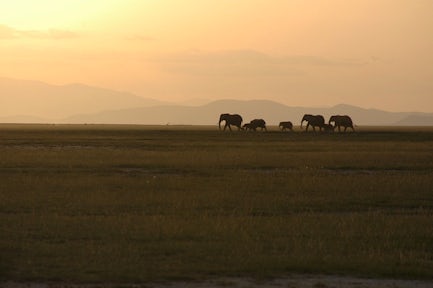
June
A transition month sitting between the long rains (ending in May) and the start of the long dry season (starting in July). The rains taper off, though you might still catch the occasional shower. The landscape is still lush and green, with tall grasses and gushing rivers. Resident wildlife is thriving thanks to the abundant vegetation. The big cats - lions, leopards, and cheetahs - can be harder to spot due to the long grass, but you'll often find them on termite mounds or rocks where they perch to survey their surroundings. The wildebeest herds are typically still in the Serengeti, but you may spot a few early arrivals, especially in the western and southwestern parts of the reserve.

Termite mounds provide great vantage points
July - October
The peak season in the Masai Mara. It’s the long dry season so low chances of rain and consistently clear skies. This is migration season.
Over the course of the season, over 1.5 million wildebeest, zebras and gazelles make their way up from Tanzania into the Mara. August and September is the best time to visit if you want to maximise your chances of seeing a river crossing as the herds dart across the Mara and Talek rivers (whilst attempting to dodge the crocs and big cats!).

River crossing during the Great Migration
November
This is typically the short rainy season in the Mara. The weather tends to follow a rhythm with clear mornings followed by building clouds and dramatic, beautiful afternoon skies. Most of the wildebeest herds have moved back south into Tanzania, but resident game is still abundant. This is the shoulder season so you’ll see fewer vehicles and lower prices.
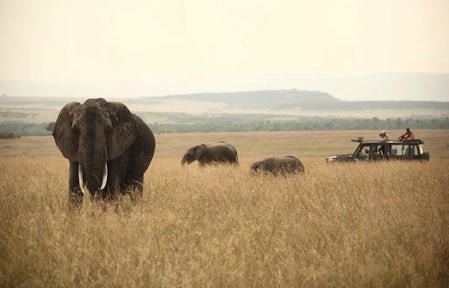
December
Another transition month as the short rains ease up by mid-month. In the first half of December you may still see some scattered showers, but by late December you’ll have clear skies with scattered clouds creating stunning sunrises and sunsets. The landscape is verdant from November rains, but easier to navigate. Many animals begin calving at this time of year, predator activity picks up, and you’ll see lots of game concentrated around the permanent water sources. By Christmas and New Year, the short dry season is well underway and rates pick up (but still lower than July-September prices).
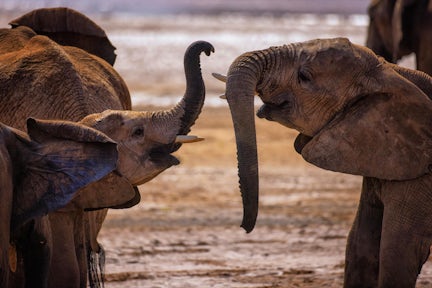
What makes the Masai Mara unique compared to other safari destinations in Africa?
Density of Wildlife
Compared to parks like the Serengeti, the Mara is a relatively small park which means it has one of the highest wildlife densities anywhere in the world. The Mara's ecosystem supports one of Africa's highest year-round densities of big cats. It's common to see multiple prides of lions, resident leopards, and cheetah families all in a single day. The Mara is one of the few places on earth where you can reliably spot all of the Big Five (lion, leopard, elephant, buffalo, and rhino) across a few days (and sometimes all in one day!).
Iconic Landscape
The Mara’s landscape is iconic and its open savannah allows for easy wildlife viewing. The rolling grasslands, dotted with iconic umbrella acacias and intersected by flowing rivers create perfect conditions for wildlife viewing and photography.
Great Migration
The Mara - along with the Serengeti in Tanzania - is the stage of for the Great Wildebeest Migration between July-October. This is one of the most impressive wildlife events on earth and a bucket-list item for many.
Conservancies & Reserves
The Masai Mara is split between the main reserve and the Mara conservancies. The reserve is the best place to be to see the migration, and the conservancies allow you to do more than just game drives, including walking safaris and night game drives.
Maasai Culture
The Maasai people still maintain their traditional lifestyle here, and the the Mara conservancies are a shining example of the positive collaboration between local communities and tourism. Visiting the Mara will give you an appreciation for Maasai culture and local way of life, interacting with communities who have co-existed with the wildlife for centuries.
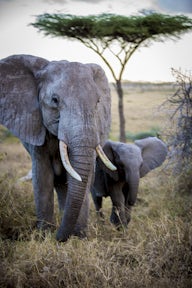
What are the differences between staying in the national reserve versus private conservancies?
The Masai Mara is a large ecosystem made up of the Masai Mara National Reserve, a number of private conservancies, as well as many traditional Maasai villages.
In the 1510 km² Masai Mara National Reserve, you will find rolling hills and vast savannahs. The wildlife is abundant here. Your game drives in the reserve must stick to the designated roads/tracks - and no night game drives are allowed. The reserve is the best place to be during the migration season as the Mara and Talek rivers flow through and provide the stage for the incredible river crossings. The main reserve is much bigger than the private conservancies - so there is a lot to explore and the landscape is breathtaking.
The private conservancies in the Masai Mara are protected areas that sit adjacent to the main Mara Reserve. These conservancies are owned and managed by local Maasai communities or private entities - and they represent the best of community and tourism collaboration. The reserves have their own resident game and many also act as wildlife corridors for animals moving to and from the main reserve.
The conservancies follow different rules to the main reserve - you can drive off-road and head out on night game drives in search for the Mara’s nocturnal species like aardvarks and bush babies. You can also do walking safaris with expert local guides. During peak season, the main reserve can get busy and you will notice lots of other safari vehicles around. The conservancies on the other hand have strict limits on the number of vehicles and rooms allowed within their borders, this means that you will see far fewer vehicles around which can make for a more exclusive safari experience.
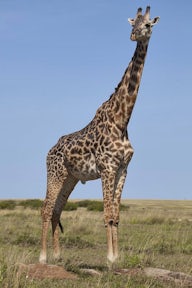
The daily schedule and rhythm of game drives
Coffee & morning game drive
Game drives take place in the early morning and late afternoon. This is when the animals are most active due to the cooler temperatures. This also coincides with sunrise and sunset which creates stunning backdrops as you drive through the vast plains.
The day usually begins with an early wake up around 5:30am. After some coffee and a light bite to eat, you’ll jump into the Landcruiser just after sunrise. The sun sits low on the horizon and blankets the savannah in soft, golden lighting. Nocturnal predators are still active - you may catch lions or leopards still out from their night’s hunt, big game like elephants and giraffe are easy to spot, and during migration season river crossings often take place in the morning.
A morning game drive typically lasts around 3-4 hours.
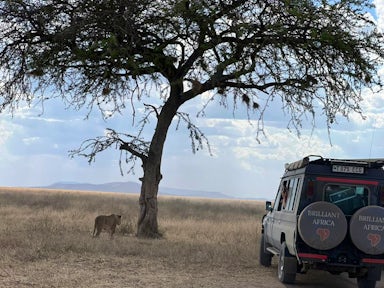
Relaxing at the lodge
As the temperatures start to pick up (and stomachs start growling) - you’ll head back to your lodge for a full breakfast around 10 am. The middle of the day is spent enjoying the lodge - taking a dip in the pool, soaking up the views (it’s not uncommon to spot wildlife wandering within eyesight of your lodge!), or taking a nap before heading back out into the bush. If you’re in a private conservancy, you have the option to head out on guided bush walks too.
Lunch is typically served around 1 pm in buffet style.
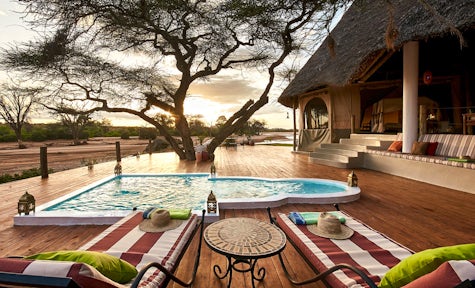
Afternoon game drives
As temperatures cool again, you’ll head back out into the savannah around 4 pm. The afternoon light is extraordinary and you’ll stay out until the sun sets around 6:30 pm. This is the perfect time to enjoy a ‘sundowner’ (very important on safari) as you soak up the views. If you’re staying in a private conservancy, you can extend the afternoon drive into a night drive to go searching for nocturnal species.
Every game drive is different - you never know exactly where you will end up or what animals you will see. That’s what makes them so exciting - the morning drive could be spent metres from a herd of elephants, while the afternoon is spent with a pride of lions or a tree-climbing leopard. Then there are the real ‘wow’ moments - spotting a hunt taking place, or watching two thousands wildebeest charge across the Mara River.
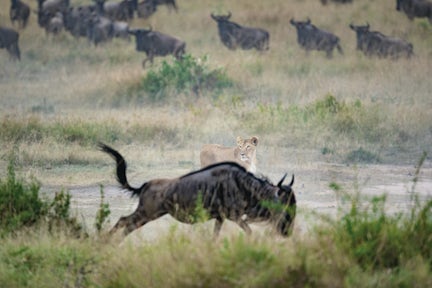
Hot Air Balloon Safaris
One of the best ways to understand the sheer scale of the Mara is with a hot air balloon safari. These take the place of one of your morning game drives. You’ll be up early with a quick coffee before transferring to the balloon launch site. You’ll then board the balloon and begin the flight which lasts for around an hour. The pilot will take you to different elevations - getting lower over herds of wildebeest or elephants, and then higher to take in the expanse of the Mara with its vast plains and winding rivers.
After the flight, enjoy a champagne breakfast before heading back to the lodge.
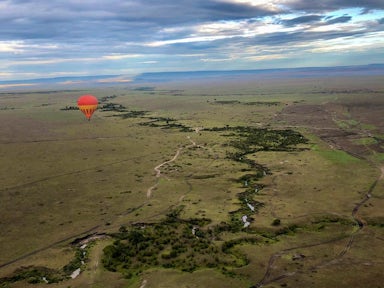
How long should I spend in the Masai Mara?
You'll want to spend a minimum of 3 nights in the Masai Mara. This gives you two full days on safari and enough time to cover good ground and enjoy the variety that the Mara can offer. The main reserve is just over 1,500 km² - quite compact compared to many other parks in East Africa. This means the density of wildlife is incredible, so you'll see so much over the course of two full days.
Most people will combine their stay in the Mara with other destinations in Kenya (or Tanzania and Uganda) - so 3 nights is the sweet spot to balance exploration and budget. However, if you've got the flexibility in your budget and want a deeper exploration, extending your time to 4-5 nights will allow you to explore every corner of the Mara and take some of the pace out of your safari so you can spend that extra bit of time with the animals you see.
If you want to stay for for more than 3 nights, our advice is to split your time between the main reserve and a private conservancy. The conservancies have strict limits on the number of rooms and vehicles allowed within their borders - this makes for a more exclusive safari experience. They also don't follow the same rules as the main reserve, meaning you can head out on horseback safaris, walking safaris, and night drives here.
If you're travelling during July-October, you'll want to be in the main reserve for the Great Migration (we recommend 3 nights minimum to give yourself the best chance of seeing a crossing) - you can then combine this with a couple of nights in a private conservancy (or hop over the border into Northern Serengeti - a good option during migration season).
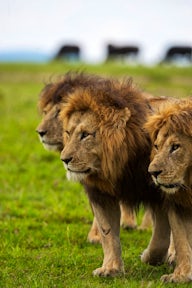
Getting to the Mara
Fly or Drive?
Flying is almost always the best option. A number of airlines like Safarilink and Air Kenya operate daily flights from Nairobi’s domestic terminal (Wilson) into the Mara. There are a number of different airstrips in the Mara, e.g. Ol Kiombo, Keekorok, or Mara North - which ones you fly into will depend on where in the reserve you are staying (or if you’re in a conservancy).
The flight is about 45 minutes and you can enjoy incredible views of the Rift Valley and vast savannah as you fly over. Once you touch down at the airstrip in the Mara, you’ll be met by your guide and head out on your first game drive as you make your way towards your camp/lodge.
Driving is possible - it’s a 5-6 hour journey along (mostly) tarmac roads - with some bumpy sections as you get closer to the Mara. The main benefit of driving is that it means you'll get a private vehicle throughout your safari in the Mara. It's also an alternative option for any nervous flyers!
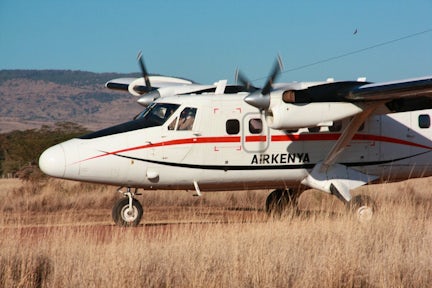
Masai Culture
The Masai people are known globally for their vibrant red robes and tremendous bravery as fierce warriors in the wild.
Their way of life can seem unimaginable for many; living amongst the punishing dangers of the natural world.
A Masai cultural experience is a fascinating insight into the life of the Masai people, learning about their rich history and culture.
From centuries of living amongst the untamed wild, the Masai have mastered living off the land.
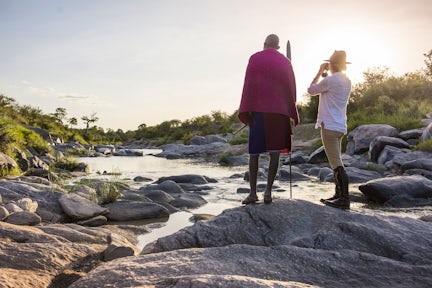
Masai Mara FAQs
-
How close do you get to the wildlife?
Safari vehicles are customised Landcruisers that guarantee unobstructed views of the wildlife - so as you game drive through, you’ll spot animals at all distances, from metres away to far in the distance.
You can often find yourself just metres away from the wildlife. In the main Masai Mara reserve, driving off-road is not permitted (unlike in the conservancies), so how close you get to the wildlife depends on how close the wildlife is to the tracks that intersect the park. The big cats generally ignore the safari vehicles completed, treating them as part of the landscape - it's quite common for a pride of lions to be resting in the shade just metres from the track, or elephants to be crossing the road in front of you.
Giraffes are curious - you’ll often see long swivelling necks turn to look at you as you pull up near a group of them. They’ll stop and stare, but won’t change their behaviour. They’ll happily sit there chewing leaves and flapping their ears (mostly to get rid of the flies buzzing around their eyes!) while you sit and watch them.
All our guides are experienced, can interpret the behaviour of the animals and will maintain a safe distance.
-
What kind of wildlife can I expect to see, and how abundant is it?
All of Africa’s Big Five can be found in the Masai Mara - lion, rhino, buffalo, leopard and elephant.
Big cats are found in abundance too. The Mara supports one of Africa's highest lion densities. Most guests will leave the Mara having seen a lion pride, if not more than one. Leopards are regularly spotted in the riverine forests, particularly along the Talek and Mara rivers. Cheetahs favour the open plains, and are typically seen atop a termite mound scanning the horizon for far off prey! On night drives in the conservancies, caracals and wildcats can also be spotted.
For elephants, expect to encounter multiple matriarchal herds daily, often 20-40 individuals strong. The bull elephants can be found leading mostly solidarity lives in and around the family herds. Buffalo are equally abundant and herds of 200+ are common. Black rhinos are highly protected in the Mara and are often difficult to spot. There are no white rhinos in the Mara.
There are hundreds of resident plains zebras and blue wildebeest even outside migration season, when their numbers swell to over a million. Masai giraffes are common, usually in family groups of 6-12. Both Thomson's and Grant's gazelles dot the plains in large numbers, alongside topi, hartebeest, and impala.
For predators beyond big cats, there is a healthy population of spotted hyenas, they are often seen at dens with cubs or tussling with jackals and lions. Smaller carnivores like bat-eared foxes and servals are regularly spotted. Along the rivers, there are large pods of hippos and some of Africa's largest crocodiles.
Bird life is spectacular, with over 470 recorded species. Ostriches, secretary birds, ground hornbills, the stunning lilac breasted roller, and various birds of prey including goshawks, martial eagles and bateleurs are commonly seen.
Brilliant Africa - 2024 Season
3 reasons to book with Brilliant
1. Highest-rated safari company on Trustpilot
So you can book with confidence knowing you're in safe hands.
2. A fully bespoke service and expert impartial advice
Planning a trip to East Africa is complicated. Brilliant makes it easy. Our team have spent decades in the region so we can help you find the right trip - and we don't charge a fee.
3. Exclusive access at the best rates
We have exclusive access to the best value-for-money camps and lodges at rates you won't get anywhere else.

Melissa and team ready for safari
Travel with Brilliant Africa
Every year, we help hundreds of travellers explore East Africa.
Our team can help you find the trip to match your dreams, budget, and appetite for adventure.
Popular Trips including the Masai Mara
The tours below showcase just some of what is possible. Use these itineraries as starting points, or to draw inspiration. Then get in touch, and let our expert team help craft the perfect itinerary for you.
Ready to plan your African adventure?
Listen
We'll spend some time listening to your aspirations, then discuss the kind of experience that might suit you.
Match
Next we'll discuss the options, shortlist the best trips for you and present you our impartial recommendations.
Reserve
We'll place a 24 hour hold on your preferred option - without obligation - whilst we talk through the details.
Whatever your budget, group size, length of stay, preferred activity or appetite for adventure, we can help.



